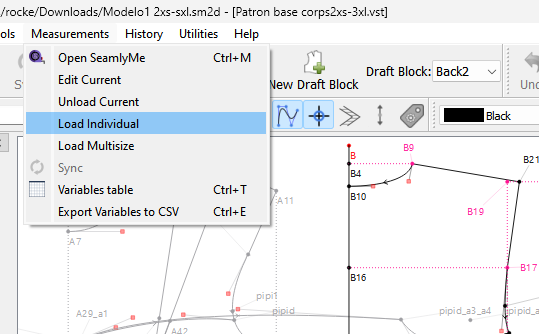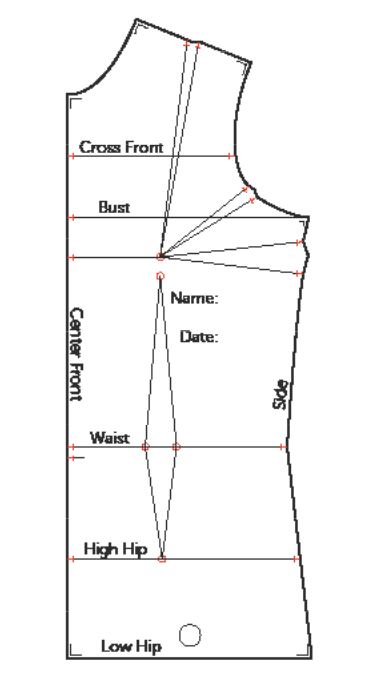Greetings from the US middle of nowhere.
I found seamly2d a couple of days ago, and to my delight, it works on linux (with flatpack AND appimage, wooohoo, cause everyone wants to use appimage these days, and I really dislike that).
I’m somewhat ok with drafting blocks on paper (always have to refer back to instructions), and decently good with modifying those blocks for the stylelines I want, again on paper, and have been searching for a way to digitally draft to make better use of my new projector for sewing patterns so I’ve been exploring the software a bit. And now, I have a few questions.
I’ve been working on creating a moulage (following Suzy Furrer’s Craftsy Bodice Sloper class, which is - apparently - a slight modification of a couple of chapters of her book Building Patterns: The architecture of Women’s Clothing). I believe the draft instructions are compatible with seamly - not all that different really than Joesph-Armstrong - however, I have a bit of a problem. My figure is far from close to the standard figure, and trying to apply my measurements to any parametric draft becomes problematic (often times the drafts just don’t work with my measurements, but, I’m looking to try again in the chance that I was doing something wrong on paper).
If I can’t get a good/close enough draft from measurements alone, my fall back plan is to use standard measurements of a size that fits my shoulders, and then start making various adjustments (rounded upper back, square shoulders, full bust, full belly, maybe straight lower back, at a minimum, possibly others in addition to the fine tuning of darts and curves). Can Seamly handle these kinds of adjustments to the block? If so, are there any tutorials anywhere that show how to handle them (not the instruction on how to do each one, just how to do slash and spread in general)?
I’m also curious and the documentation has not been all that clear so far, when you take a block that was properly done with formulae, and then “cut” it up for your piece details, if you apply a new measurement file to to this “cut up” block, would the pieces adjust as well, or is it just the basic block that adjusts? As a for instance, say I have 2 family members that are close enough to standard figure that an unmodified torso block works for them with limited adjustments, person A and person B. I draft a torso block using person A’s measurement file, save it, then save as a duplicate, and create details to make a princess seamed dress. Could I open a duplicate of the dress pattern and apply person B’s measurement file to it and be good to go, or would I have to open a duplicate of the block, apply the new measurement file, and recreate the details of the dress all over again?
Final question, for now. Regardless of which of the three draft methods I’m looking at, the dart widths come from tables that can be formulaized. There are two options for getting those widths in, an unknown measurement on the measurement file (requires keeping the tables handy), but, I’d rather do variables with an if-then-elseif-then structure (usually a total of 4 options), can the variables handle that deep of an if-then-else?

